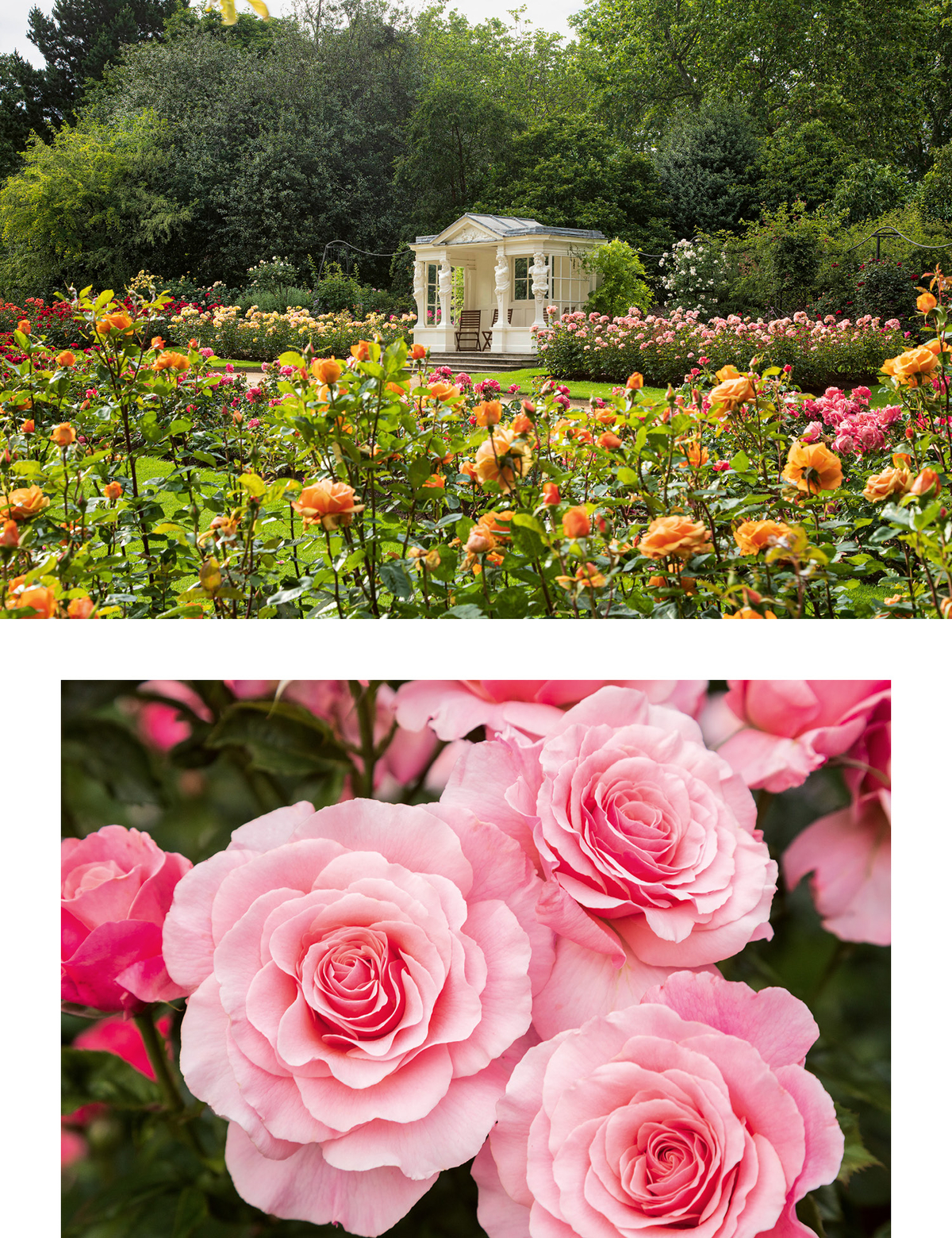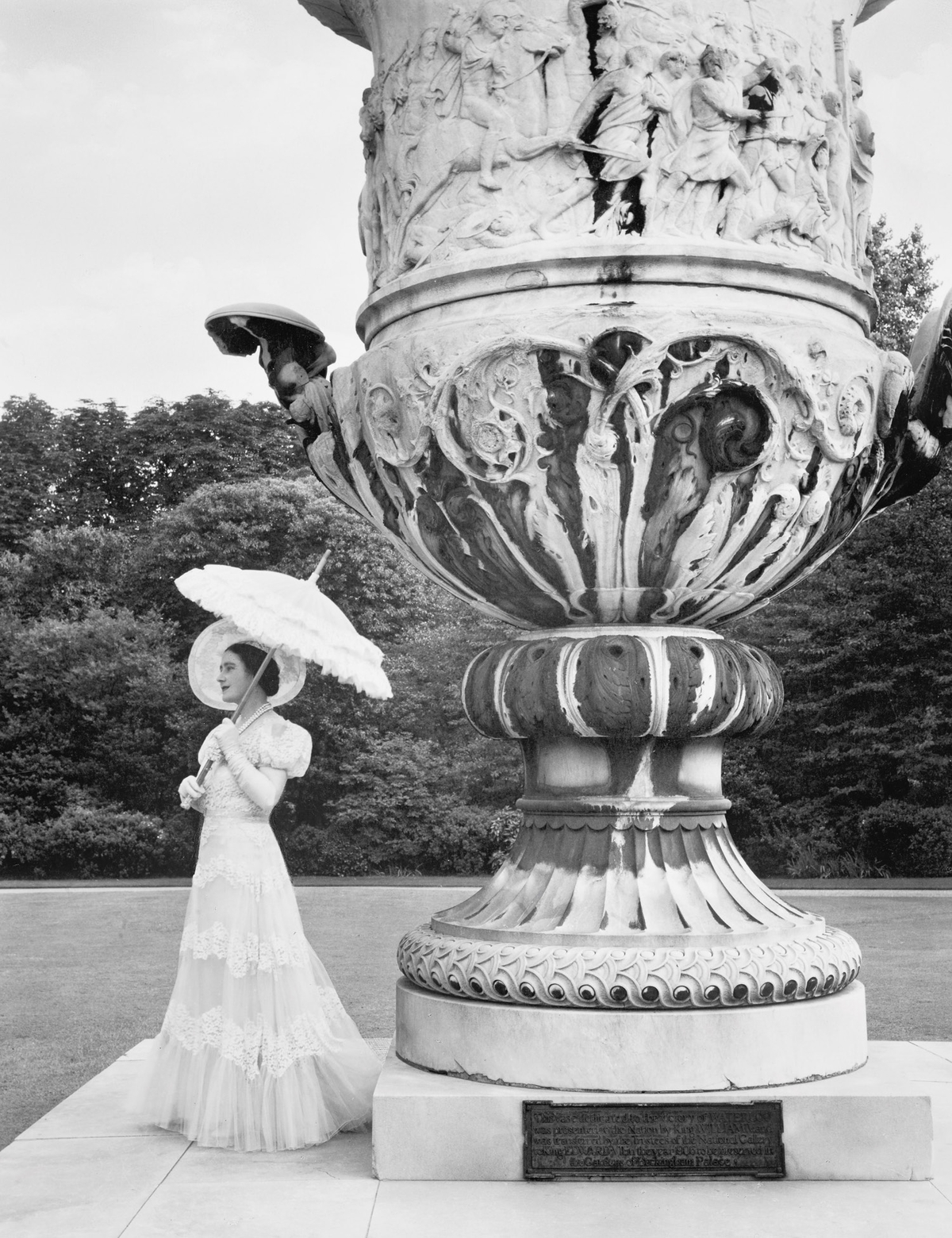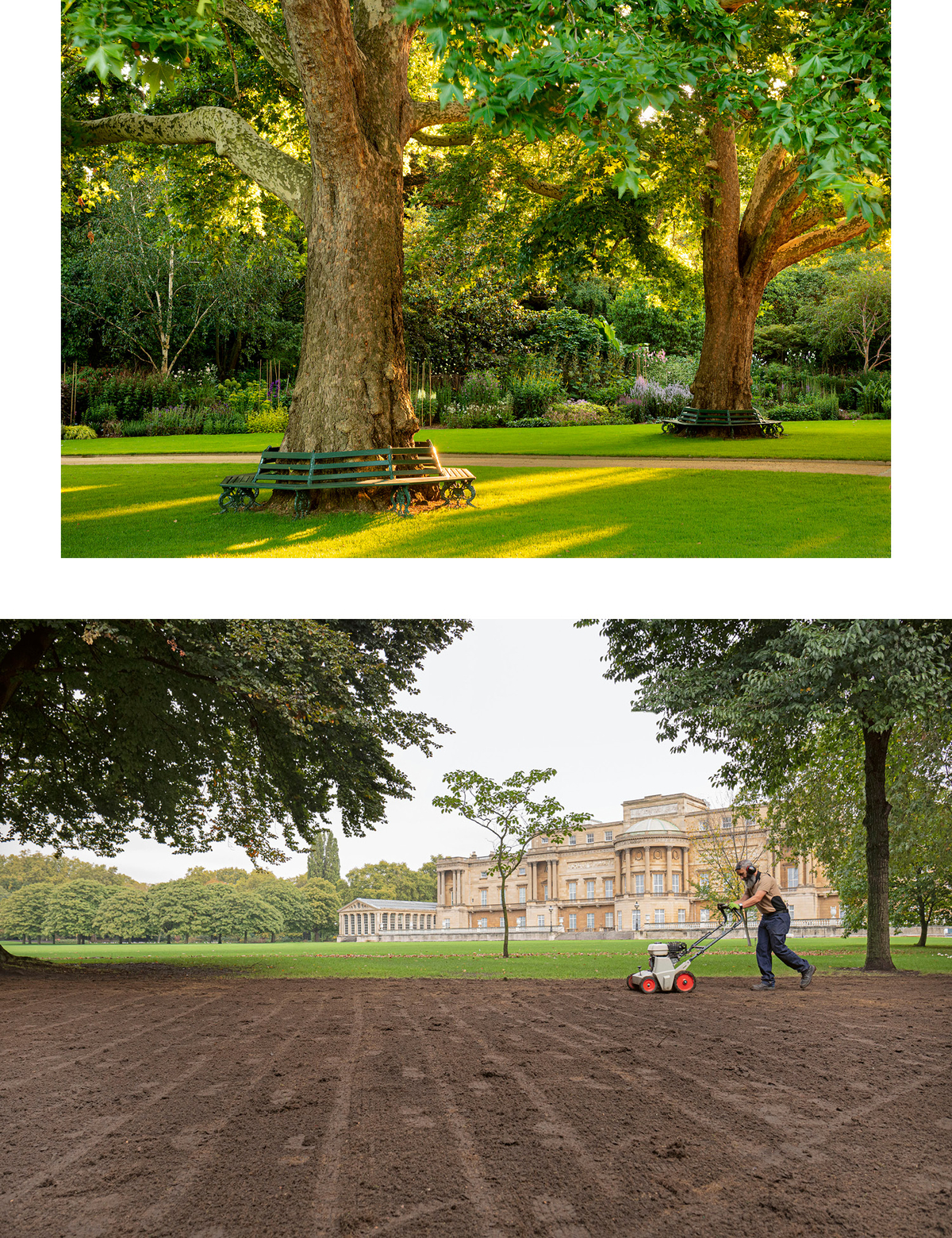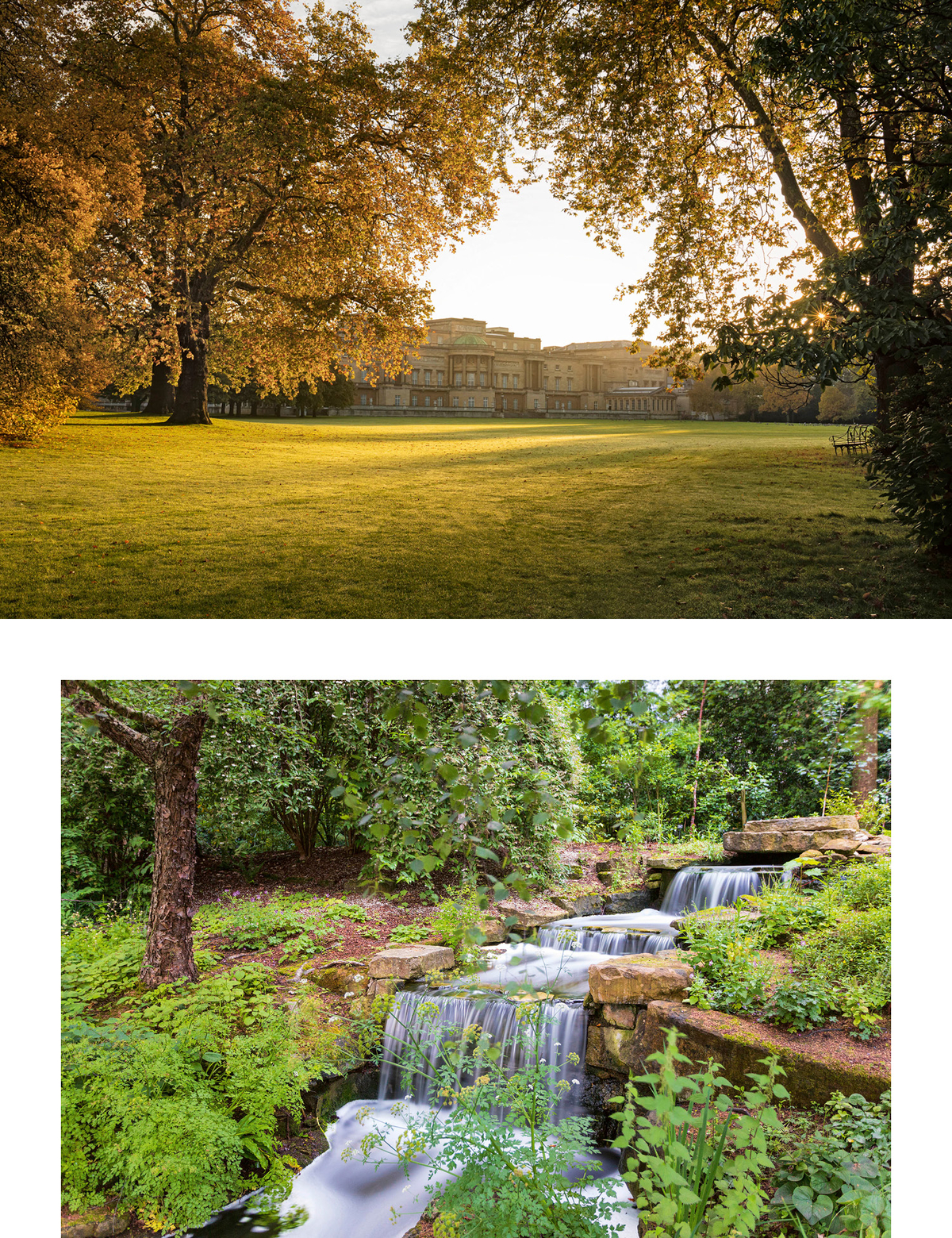A new book, publishing in time for the Queen’s official birthday today, tracks the seasons across the 39-acre royal garden, complete with tips from head gardener Mark Lane.
Spring arrives early at Buckingham Palace, thanks to its sheltered position in the heart of London. Accompanying sprouting daffodils and tulips are baby ducklings, who take their first steps on the grounds and have swimming lessons in the lake. Summer is garden-party season: the Queen hosts events, each attended by around 8,000 guests wearing all sorts of fascinator; the Rose Garden shines; and the grounds are open to the public. Autumn turns the garden’s native trees—English oak, white willow, hawthorn, alder, ash, beech, silver birch—vibrant red and orange. (Since the early 20th century, members of the royal family have celebrated wedding anniversaries, birthdays, and other special events by planting trees in the garden.) Winter sees silence, frost, and the occasional blanket of snow as the plants hibernate. Evergreen leaves and berries take the place of flowers in the Queen’s vases.
You don’t need to have visited the Buckingham Palace garden to know the beauty of nature’s perpetual transformation. But the royal garden is a pretty special place to witness it. —Julia Vitale






